Boskshi bins
Bokashi composting system probably originated in Korea with the modern systems being developed in Japan. It offers a means of reducing the volume of food waste sent to landfill from homes, schools etc
Bokashi is a useful system for those without a garden or who want to convert food waste (including cooked food) into a material that can be composted in a conventional compost bin or wormery. The Bokashi will turn waste food into pre-compost that can be buried in the garden, in raised beds or added to a compost bin or wormery. It is a relatively fast process pre-compost can be ready to be added to the soil or compost bin within about 30 days without turning (aeration).
It has been promoted in the UK mainly as a means of diverting cooked food and other organic waste from council landfill waste disposal streams saving of the costs of collection and disposal such the landfill tax. This situation may change when local councils are required to have weekly food waste collections if their contacts require them to deliver a minimum volume of waste to the AD plant for processing.
In fact weekly kerbside food waste collections may encourage householders to use Bokashi as many people are unhappy at the prospect of keeping food in a caddy for up to a week prior to collection. Composting can offer an alternative .
It is often said that cooked food waste cannot be composted. That statement needs qualification. Cooked food waste can be composted if the right type of bin is used such as a Green Johana Hotbin or Jora but these tend to be relatively expensive and as such are probably not appropriate for the first time composter they do however work well and are easy to use.
A cheaper alternative is to buy two Bokashi bins, which are available in the UK for about £25 for the pair, and to use these to ferment the cooked food waste to produce pre-compost which can then be added to the conventional compost bin. It is environmentally friendly producing no, or minimal, amounts of greenhouse gasses as the fermentation occurs at a low pH which is not favourable to methane producing microbes. As it takes place in an enclosed system no nutrients are lost to the soil during the fermentation process.
Bokashi could be regarded as an essential first stage in converting cooked food from waste to pre-compost suitable to converting to productive compost using a Dalek type bin. However, Bokashi does not appear to have been marketed as effectively as the Dalek plastic cold composing bin.
Keen composters may already use a hot composting system which can deal with cooked food and I personally do not see Bokashi challenging such systems but to the less enthusiastic composter it has three main advantages over closed vessel hot composting systems a lower initial cost, the fact the waste can be added to the bin indoors straight from the plate or kitchen board, eliminating the need for a kitchen caddy, and that it is simple as it does not involve balancing Greens and Browns the waste is just added to the bin, compressed to remove air and Bokashi bran added. However, use of a Bokashi bin will require the regular purchase of “Bokashi Bran” unless the composter is prepared to make their own, whereas most of the conventional food composters will not have any running costs but they will have a considerably higher initial purchase price.
Bokashi is not a “true” composting process as it does not use aerobic microorganism to break down the organic material it relies on anaerobic fermentation but I would recommend it as a useful addition to any household.
What can I put in the Bokashi bin?
Bokashi mixed fruit & veg + bran, including banana, potato peelings, coffee and filters. The small the items the sooner it is ready
As a sealed airtight container is used food stock that cannot be cold composted can be fermented in the Bokashi bin without having to worry about unpleasant smells, flies or rodents.
Items that can be treated in the Bokashi bin include most kitchen food waste including:
- Bread,
- Cakes,
- Cheese,
- Coffee grounds and filters
- Dairy
- Egg shells
- Eggs
- Fish,
- Fresh fruit (incl. citrus)
- Fruit skins,
- Grains
- Meat (cooked and uncooked)
- Onions
- Pasta
- Prepared foods
- Rice
- Salads (leftovers)
- Teabags
- Vegetable peelings
- Wilted flowers (conventional composting is preferable as although these ferment and breakdown they take up which can be better used for nutrients rich material or would be difficult to cold compost
Do not add:
- Liquids (water, milk or fruit juice) but liquids can be absorbed by bread or kitchen towel
- Paper and plastic wrap
Can add but consider carefully
- Mouldy or rotten food. It may introduce undesirable fungi
- Bones The fermentation process will remove meat and potential pathogenic microorganisms the bones can then be crushed and composted. .
Bokashi technique
The system involves anaerobic fermentation rather than the aerobic action of microorganism in conventional composting to convert food waste into compost. It requires the addition of “Effective Microorganisms” (EM) which are a mixture of bacteria and yeasts to break down the food waste. These microorganisms will normally include yeasts, (Saccharomyces spp.), lactic acid producing bacteria (Lactobacillus spp.), and phototrophic bacteria (Rhodopseudomonas spp.) These yeasts, bacteria and fungi will be present in the organic material in compost introduced to the soil. These organisms will be incorporated into the soil web. Materials such as eggshells and bones will also be decomposed but they will take much longer to breakdown put can be added to the conventional compost bin with the rest of the pre-compost.
The commercially available Bokashi Bin normally consists of a plastic bin with carry handle, airtight lid and drainage tap. It has an inner drain tray to allow separation of the food scraps and liquid produced by the system and to prevent the solid material blocking the drainage tap. It will often come with a measuring scoop, a push tool and even a liquid drain cup. Some homemade systems do not include a drainage tap.
The microorganisms are introduced by spreading Bokashi bran thinly on the base of the bucket and over the food during the pickling process. Some systems recommend putting two or three spoonful’s of Bokashi bran into the bottom of the bucket before adding the initial layer of food waste This is most helpful when a system is being used that does not include drainage. The food should be added in small pieces to form a layer about 3-4cm thick. Any large pieces should be cut to 3-4 cm to enable the microorganisms to ferment the food effectively and speed up the process. If possible, use fresh food. The Bokashi system will deal with food contaminated with white mould but green or black. Scatter about a measure or tablespoon of Bokashi bran the top of the layer of waste food and compress it by pressing down with the tool provided or a potato masher to remove air pockets. Cover with cardboard, plastic to exclude air and close the bin lid. Drain off the Bokashi juice every couple of days.
Repeat the layering process alternating food waste and bran as the waste becomes available, remembering to seal the bucket to exclude the air on every occasion seal until the bucket is full. Once full leave the Bokashi bin closed and undisturbed for two weeks or more, remembering to drain off the juice every other day.
Two Bin Systems
To work, effectively the system requires the use of two Bokashi bins. The bin in current use is normally kept in the kitchen so that plate scrapings and other food waste can be added directly to the bin. Once full, the bin is set aside for two weeks and the second bin brought into use.
Bokashi bins are normally kept in the kitchen or utility room but they can be housed in a garage, shed or even in a garden storage box to protect it from the rain, sun and help protect the bin from frost. However, in colder conditions the fermentation process slows down, so it should be left to digest for a longer period (e.g. for three weeks or more instead of two
Domestic Bins are available in the UK in a range of sizes a quick search on the web will show bins of 15 litre, 18 litre, 23 litre, 27 litre, 30 litre (stainless). A pair of bins are normally used so that when the first bin has been filled and is fermenting a second bin is available to take the current waste. If two bins are insufficient, I would tend to use a third rather than make larger bins. The brand leader in the UK is probally www.getcomposting which works with Local Authorities to provide residents with low-cost compost equipment. A pair of Blackwall 18 litre bins are on offer at around £20.
However, commercial size Bokashi bins are avialable.
The 120 litre Bokashi bins shown in the photos below are available from a company based in Cornwall (https://www.wiltonecostore.co.uk/) and are suitable for medium to large scale use with the bins being large enough for restaurants, small businesses, schools and nurseries. The bins shown in one of the photos are being used in a bank of six to meet a local need.
120 litre "wheelie bin" Bokashi are also available from:
- https://www.alibaba.com/product-detail/Yesil-Adim-Bokashi-Industrial-Compost-Bin_108995532.html,
- www.mygreenchapter.com ( Dubai-based ),
- www.alibaba.com/product-detail/Yesil-Adim-Bokashi-Industrial-Compost-Bin_108995532.html
This size of bin offers such establishments an alternative to aerobic composting and participation in kerbside food collection schemes. As with other Bokashi systems they can be used to ferment vegetable, fruit, meat, fish and dairy products to make environmentally friendly pre-compost for office communal areas or school gardens.
A larger 140 litre wheelie bin system suitable for commercial & larger scale operators is available from Bokashi New Zealand (https://www.zingbokashi.co.nz/commercial/)
-
Wilton Eco Store large Bokashi bin
To help you compost waste effectively, Bokashi have released a collection of bins for every household.
This 120 litre size Bokashi offers a solution where there are larger volumes of waste -
Large enough to be filled with ease
Filling the bin
-
A bank of bins with drainage
Locating the Bokashi bins
The smaller Bokashi bins are normally kept in the kitchen or utility room but they can be housed in a garage, shed or even in a garden storage box to protect them from the rain, sun and frost. If the bucket is to be kept on a patio or other outside area keep it in the shade out of direct sunlight. In colder conditions the fermentation process slows down, so it should be left to digest for a longer period e.g. for three weeks or more instead of two. Leaving the bin longer may be an advantage especially if food items such as bones, raw meat, and cooked food have been added. It does not matter if the fermentation takes longer provided it does not produce an unpleasant smell, or green/blue/black/grey mould do not start to grow on the surface both of which are indications that the contents are starting to putrefy.
After emptying a bucket always clean it well and allow to dry. Some recommend leaving it in direct sunlight for a day as this will help to get rid of any remaining odour.
Bins are available in the UK in a range of sizes a quick search on the web will show bins of 15l, 18l, 23l, 27, 30l (stainless steel)Wilton Ecostore sell a large 120 itrel bin: https://www.wiltonecostore.co.uk/bokashi-composting/
A pair of bins are normally used so that when the first bin has been filled and is fermenting a second bin is available to take the current waste. If two bins are insufficient, I would tend to use a third rather than use larger bins which would take longer to fill and would occupy more space in the kitchen or utility room.
Being a fermented product the material in the Bokashi bin will smell different from compost having a sweet brewing, rather than an earthy, smell.
If the contents start producing an unpleasant odour, it could be due to contamination by blue or black fungi. This contamination may occur if the lid has not been fully closed, too little bran has been used, there has been inadequate compaction of the waste in the bin or not draining off the liquid. If the bin is kept outdoors, it can also result from high temperature or direct sunlight.
-
Starting to fill the bin.
A little brans was added to the bin before the first batch of waste was added.
The small the pieces of waste the quicker the process. -
Bran added to the waste
The waste was compresed to remove air and bran added
-
The waste is covered
Additional waste and bran is added until the bin is full.
I use a compostable bag to cover the waste to exclude the air in the bin although it will start fermenting without being covered.
Bokashi Spray Activator
The Urban Composter is a 15L Bokashi suitable for those with smaller gardens or live in flats. It is designed to be used with a liquid spray activator, rather than the conventional dry bran. Raw and cooked food is added as for a conventional Bokashi bin but the contents are then sprayed with the activator rather than bran being added (you could choose to use bran if preferred). Boskashi liquid and solids are produced as with the more conventional bin.
The Compost Accelerator spray contains Effective Microbes (EM1)and works like the more conventional bran with microbes that break down the food waste. It has the advantage of being easier to apply than the bran and may penetrate between the waste sraps better than the bran. I liked this system and am sorry to write that it does not appear to be available from a distributor in the UK at present.
Urban Composting are currently in negotiations to appoint a new UK Distributor. In the meantime all orders will be dispatched by their Swedish Distributor.
https://www.wexthuset.com/tradgardsskotsel-underhall/kompostering
There are also distributors in Canada, Singapore, USA, New Zealand, Norway and France.
If you have any questions please contact ; lynette@urbancomposter.com.au
Bokashi Juice or tea
During the fermenting process, the bin will produce a liquid known as ‘Bokashi tea’ or “Bokashi juice” which needs to be drained off every 2-3 days. I tend to drain off the juice at least every second day to avoid it turning sour and producing an unpleasant smell. Some juice will also be produced during the initial stage while the food waste is being added especially if juicy fruit and vegetables are being added to the bin and it is taking some time to fill it. The juice will be a reddish, orangey colour with a smell of vinegar or slightly fruity. There may be a thin white coating on the surface or white fungal threads floating in the liquid .
Liquid Feed
Bokashi juice contains Nitrogen, Phosphorous, and Potassium plus other nutrients (which may include chlorine, iron, zinc, boron and manganese) and microorganisms from the food waste making it a good liquid feed or plant fertilizer and soil enhancer. The juice is diluted 1-part juice :100 parts water for bare soil. This is about a 1 tsp of juice to 2-3 litres of water. Earthprobiotic.co.za are more specific in their examples of recommended concentrations for different applications suggesting 1:100 for lawns, 1:300 for gardens and pot plants, 1:500 for succulents and 1:1000 for any sensitive plants.
The diluted juice can be sprayed or watered onto the soil using a watering can fitted with a rose including the soil around plants. It is acidic and should not be allowed to touch the foliage at this concentration although other sources suggests that a dilution of 1:500 or a dilution of between 1: 500 – 1: 000 can be used for spraying onto foliage,(avoiding any blooms). I would suggest always testing the dilution you propose to use on a single leaf of each type of plant just in case.
The juice contains living organisms and should be used within 24 hours. for details of other liquid feeds click on Plant Liquid Feeds
Compost activator
The large numbers active microbes living in fresh bokashi juice makes it an excellent compost activator or enhancer. If diluted before being added to the heap it will both activate and moisten the contents moisture during dry periods. This is especially useful with plastic bins.
Drain deodoriser or cleaner
The concentrated Bokashi juice can be run off from the Bokashi bin and pored undiluted down the kitchen and bathroom sinks, the toilets. It can also be safely poured down drains connected to septic tanks. The acidic solution helps prevent the algae growth and reduces odour. It used to be said that it cleared blocked drains, but it is now recognised to be more of a preventive measure than a means of unblocking seriously blocked drains.
Sources and further information
https://www.bokashi.com.au/Bokashi+One/How+it+Works/Bokashi+Juice.html
https://nicolerenn.files.wordpress.com/2016/02/how-to-use-bokashi-juice.pdf
https://bokashiliving.com/whod-like-a-cup-of-bokashi-tea/
https://www.earthprobiotic.co.za/FAQ/
https://www.zingbokashi.co.nz/free-info/how-to-use-your-zingbokashi-juice/
Fungal mould
It is quite normal for a white mould to grow on the fermenting material. As the fermentation is an anaerobic process please do not keep opening the bin to check on what is happening as it will let the air in!
The growth of a green mould is a sign that there might be a problem. This can indicate inadequate fermentation. During the early stages of green mould growth, the situation may be rectified by adding more Bokashi bran and the bin allowed time to recommence fermentation. However, if the green mould is extensive the bin should be emptied. The mouldy waste can be bagged and sent to landfill
Using the Bokashi Pre-compost Adding to compost bin or soil
Although often described as a composting procedure the bokashi bin is actually a pre-composting process with the product being added to a regular compost bin or buried in the garden to "finish".
Adding to a compost bin
As a composter I add the pre-compost produced by the Bokashi bin to my compost bins. This achieves the original objective of converting cooked food waste into a form that can be used as a soil improver at home in a without attracting vermin. I prefer this to burying the pre-compost directly in the soil as I use my Bokashi at home and having limited space do not have room for a trench and I lose track of the location of the places where I have buried material when post hole composting However, many will prefer to add the pre-compost directly to the soil making it available to the growing plants sooner, this avoids handing the material twice and reduces the risk of the addition of small amounts of greenhouses gases to the atmosphere if the aerobic composting bin has anaerobic areas.
On completion of the formation process the appearance of the food waste will have changed very little in appearance but do not worry the organisms in the Bokashi bran will have done their work enabling micro-organisms in the compost bin or soil to break the product down quickly without attracting the attention of rats or other vermin.
Adding Bokashi pre-compost to the compost bin
When adding the Bokashi pre-compost to an aerobic composting bin or wormery will mean that the anaerobes responsible for fermenting the waste will be replaced by aerobic microbes
Most people who are planning to add the precompost to a compost bin will add the pre-compost to a partially filled working compost bin. If a plastic coned shaped bin (Dalek) is being used to cold compost the normal household and garden waste some will just aerate the material in the bin using a compost aerator or spade and empty the Bokashi into the bin. It is then mixed with a couple of spades of fresh soil the upper layers of the bin are turned so that the pre-compost is both well mixed the existing ingredients and buried. Some just tip the pre-compost into the bin and continue to add normal greens and browns with the minimum of mixing (I have not tried this). If using a New Zealand bin where the contents are not turned, I mix the pre-compost with soil before adding it as a layer to the bin. If hot composting where contents are being turned for the first month the pre-compost can be added as a separate layer followed by a soil layer and then alternative layers of greens and browns.
Trench Composting
The material can be buried in a hole (“post hole” composting), but I feel that it is best to use the Trench composting method where a 30cm (1ft) deep trench is dug to bury the Bokashi product (often with the addition of uncooked kitchen waste) this can be left over winter to make a bean trench or used after 2-3 weeks.
The pre-compost will be acidic, probably pH 3.5 - 4 so if being added to a trench or post hole it will need to be left buried for two or three weeks for the pH to adjust to that of the soil before coming into contact with plant roots. So, delay planting or bury the Bokashi at a depth which the roots will not reach it for some time. If it is being added to an over wintering compost trench that is being used in the coming spring there is no problem,
There should not be any problem in sowing seeds on ground where Bokashi has been buried provided the seed roots will not reach the Bokashi for at least a couple of weeks.
If burying Bokashi on its own rather than mixed with uncooked vegetable waste in a trench , as part of a slower composting trench, the pre-compost will take on the appearance of soil after two to six weeks depending on the temperature and whether it is mixed with the soil.(Mixing the Pre-compost with the soil will speed the process). As in the case of conventional cold composting little or nothing will happen at winter temperatures
Adding the pre-compost to a wormery
Wormeries
Bokashi pre-compost can be added to a wormery allowing meat and other items that are unsuitable for vermicomposting without pre-treated to be processed. Bokashi fermentation is an acidic process and while it can provide an effective means of completing the processing of kitchen waste the addition of acidic bokashi pre-compost to a worm bin must be done with care as worms prefer a neutral pH and the bokashi material will normally have a pH of 3-4.
The bokashi pre-compost should be introduced to the wormery in relatively small amounts over several days together with additional Browns. This allows the worms to adjust to the new material, once they do so they will process it more quickly down material that has not be pre-treated in the Bokashi bin. It is likely that if Bokashi material is added regularly it will increase the acidity of the worm bin so the pH should be monitored, and additional lime added. The worm bin should be carefully monitored over the period the Bokashi pre-compost is being added. Initially only add a small amount of pre-compost to the bin increasing the dose as the worms adjust to the more acidic pH. Add shredded paper or other source of carbon when adding the pre-compost to maintain the C;N ratio and check the pH adding lime if the bedding becomes acidic.
The Soil Factory for Bokashi in a flat or apartment
The lack of access to a garden does not mean that kitchen waste cannot be treated using the Bokashi system. In most cases a two bin system should more than meet the needs with the pre-compost being treated in a “Soil Factory” which can be housed on a balcony or storage area.
Having a “soil factory” sounds quite trendy but do not let the term put you off. The “factory” is just a container into which the pre-compost is put to mature and complete the composting process producing “Super Soil” or if you prefer to be less enthusiastic a good soil improver that can be used to top-up flower pots, use in window boxes or outdoor pots or growing spaces.
A strong plastic storage box makes an ideal Soil Factory being easy to clean and store. A lid is optional and has the advantage of keeping vermin, pets and children out of the material, but it should not be airtight as the soil factory, unlike the original Bokashi bin, needs air.
A full commercial Kitchen Bokashi bin will contain 16 -19 litres of waste and is used in a “Soil Factory “ in the ratio 1 part Bokashi : 2 parts soil. So, if adding the pre-compost to a single container it needs to have the capacity of at least 60 litres to allow for turning the material. Two or three medium containers are better than one large one as they may need moving when full and a spare may be brought into use when the first is full. The container should have drainage holes and be stood in a tray to collect the exudate to avoid staining the balcony floor, decking or paving slabs.
Ideally lower 4 inches of the container are filled with fresh good quality soil using a plastic or preferably stainless-steel compost scoop. If it is possible to obtain some fresh compost from a garden or wormery that contains a good supply of mini-beasts and worms to supplement the soil this will give the Factory a good start. However, some sources report that the old soil from a pot plant or a patio container also works, which provides a means of utilising soil made available by repotting plants as they grow.
The pre-compost is then added directly from the Bokashi fermenter. This is then covered by a 2-3-inch layer of fresh soil or compost and mixed well.This layering can be repeated until the container is full. The top layer should be about 4 inches of soil. Once full I leave it for a few days and then mix it again covering with a final layer of compost (or soil) The loose-fitting lid is then be put in place. If a lid is not available, the material can be covered with newspaper or even an old towel to assist with moisture retention
The waste will take between three and twelve weeks to completely break down, depending on the temperature and type of waste. It is worth checking progress after 2-4 weeks. At this stage the proportion of material recognizable as waste food will have decreased and that of “soil” will have increased. Mixing the soil factory contents weekly will speed the process. The waste breaks down more quickly when warm but not too hot (under 40C). Decomposition slows at lower temperatures so during the winter it is best kept indoors or well insulated if left on a balcony the temperature should not fall below 6C
Additional pre-compost can be added to top-up the box at any time provided the contents are mixed well after each addition. Once finished the same container can be reused without cleaning by leaving some soil in the bottom of the container to mix with the next batch of Bokashi pre-compost but I prefer to clean the container and start another soil factory. It is worth checking the pH of the finished “Super Soil” as it might be acidic, but this will rectify itself if the material is left for a couple of weeks.
When the bin shown is not being used as a soil factory I clean it well and then bring it into use as a summer wormery for promotional activities in schools . The lack of a drainage tap reducing the risk of accidents during transport.
Using a dedicated compost bin as a soil factory
This approach may be helpful when larger quantities of pre-compost are being produced for instance in a block of flats where several residents have come together to run a community garden or allotment.
The system requires the use of a two small compost bins, I prefer a small pallet bin or a purchased New Zealand style wooden bin about a cubic metre in size as it is easier to turn and monitor the contents. A source of soil is required it can be kept in a heap for ease of shovelling or a suitable container. This stock of soil can be old tired soil that will benefit from improving in the soil factory e.g. from the greenhouse, planters or containers.
Finally, there should be a bin to allow the product harvested from the soil factory to further mature for a longer period such as over the winter when it may not be easy to spread it on the site. This may be a separate bin for the compost from the soil factory or it can be added to the bin currently used for maturing the normal compost on the site.
Layering the Compost bin Soil Factory
A layer of soil about 4” deep should be added to the working bin and the pre-compost tipped onto it from the Bokashi. About two inches of the soil is added and the soil and Bokashi mixed well. A further layer of soil is added, and the layering and mixing process repeated until the bin is full. The bin and material are left for at least 2-4 weeks for the bokashi pre-compost to decompose second.
Using two dedicated bins allows the now full bin to be left to complete the breakdown of the pre-compost while the second bin is brought into use
Composting Weeds in a Bokashi bin
Garden Bokashi mounds can be used to convert fresh weeds into “compost” but in this section a conventional Bokashi bin, as is normally used for food waste, is used for smaller quantities of weeds
Chop the weeds into small pieces, the roots can be included, to form a layer about one inch deep. Add 1-2 heaped tablespoons of bran and compress to remove the air and air spaces.
Continue layering the bin with weeds and bran until the bin is full. Compressing the contents as each layer is added.
Seal the bin and allow to ferment for a minimum of 2-4 weeks draining off the liquid bokashi tea every 2-3 days.
When fermentation is complete the pre-compost can add to the compost bin or buried in a garden trench or pit.
Bokashi Windrow on the Allotment
Small Bokashi bins as shown above are used at home for cooked food while large-scale systems are used by on farmers, in horticulture etc.
We are looking at systems suitable for use in community composting and for garden waste from large gardens and allotments. Material on the net shows such Bokashi windrow systems covered with a polythene sheet with the ends buried in the ground all-round the windrow to exclude air and create anaerobic conditions. This allows the allows the exudate to drain into the soil making additional nutrients available if plants are to be grown in that location in the future.
As on our demonstration plot, we only compost and do not grow plants rather than leave the base open to the ground the whole windrow has been wrapped in the polythene sheet like a giant but inedible pastie so that the exudate is retained in the compost.
The photo shows a small windrow of the garden waste, originally collected in 3 pallet bins, made using a lasagne technique with waste and a mix of three Agriton products; Actiferm EM, Aegir seashell grit and Endasil clay granules .The pastie is then covered with a second protective cover to reduce the risk of any holes being made in the polythene which would although air to enter the pastie. It was planned to open the package after 8-10 weeks, but we are now delaying until relaxation of the Covid-19 controls make it possible for a small group to meet and unwrap the beast.
Thanks to Agriton for their help.
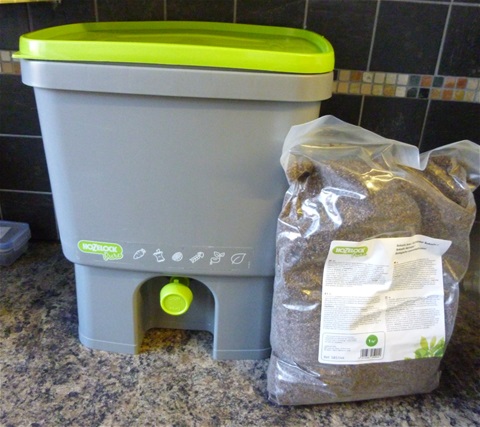
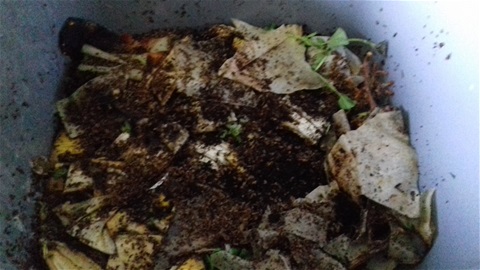
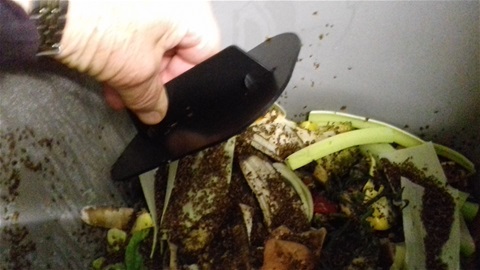
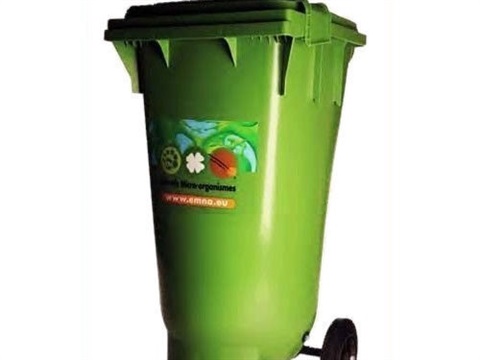
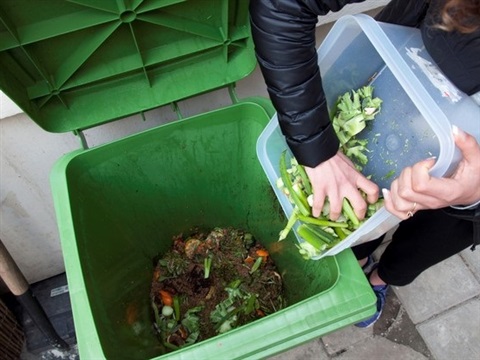
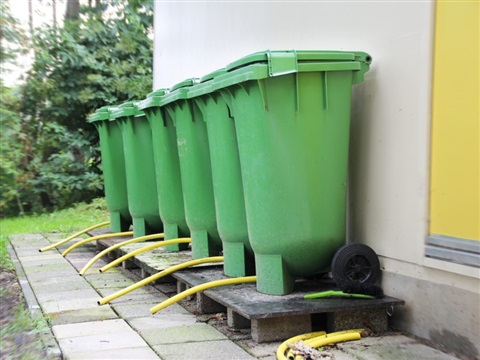
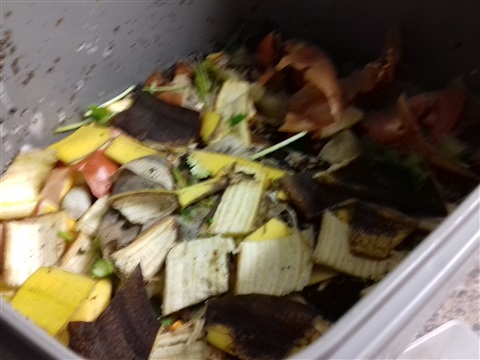
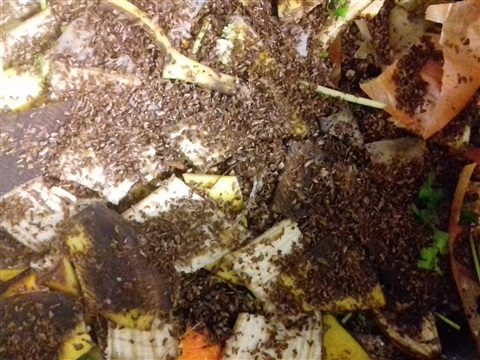
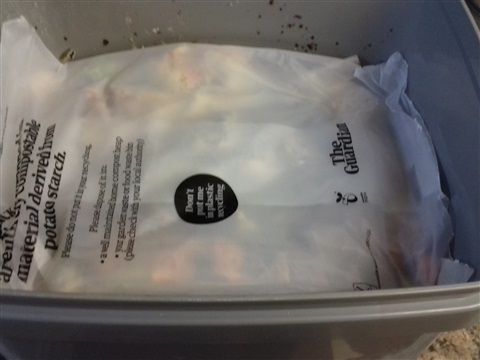
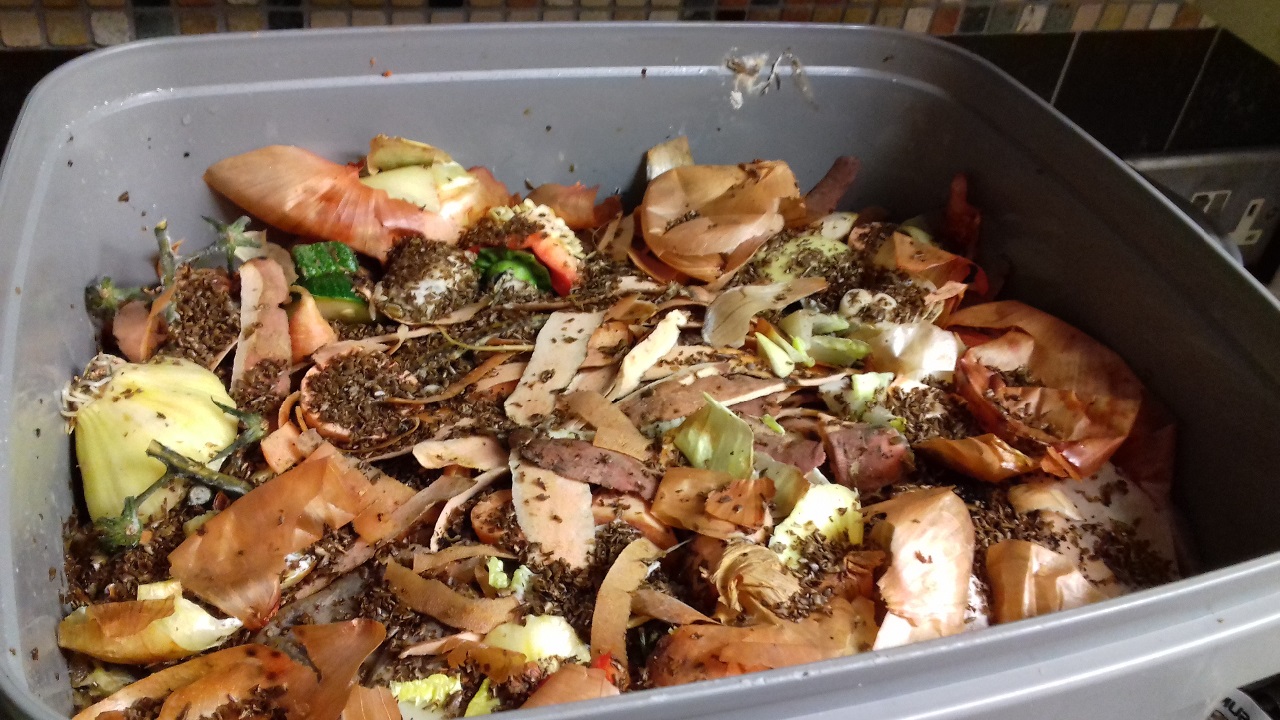
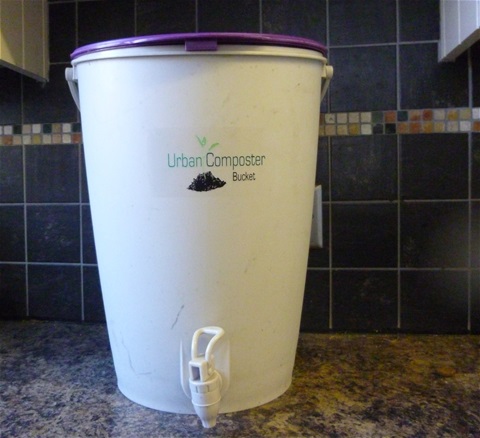
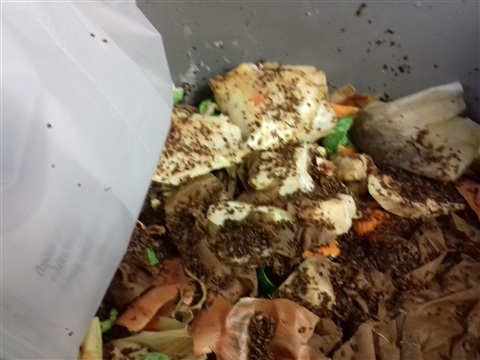
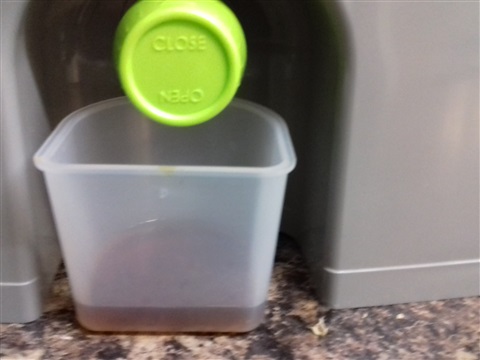
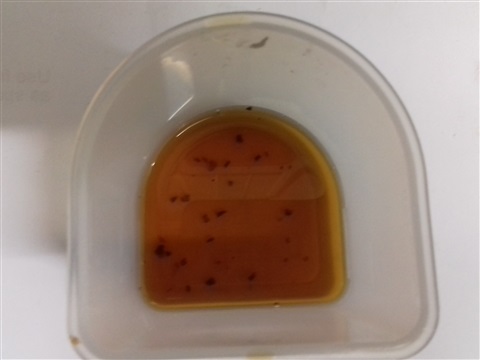
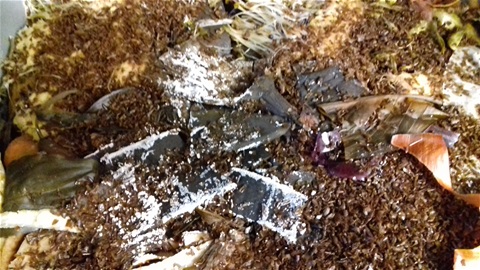
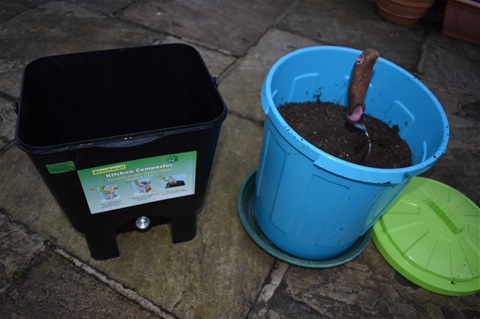
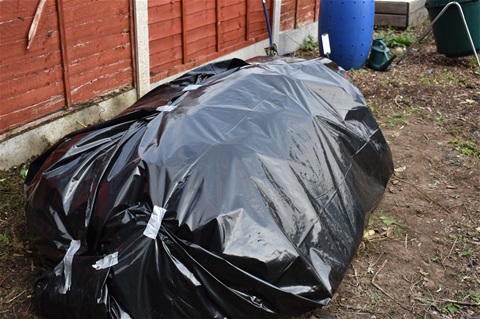
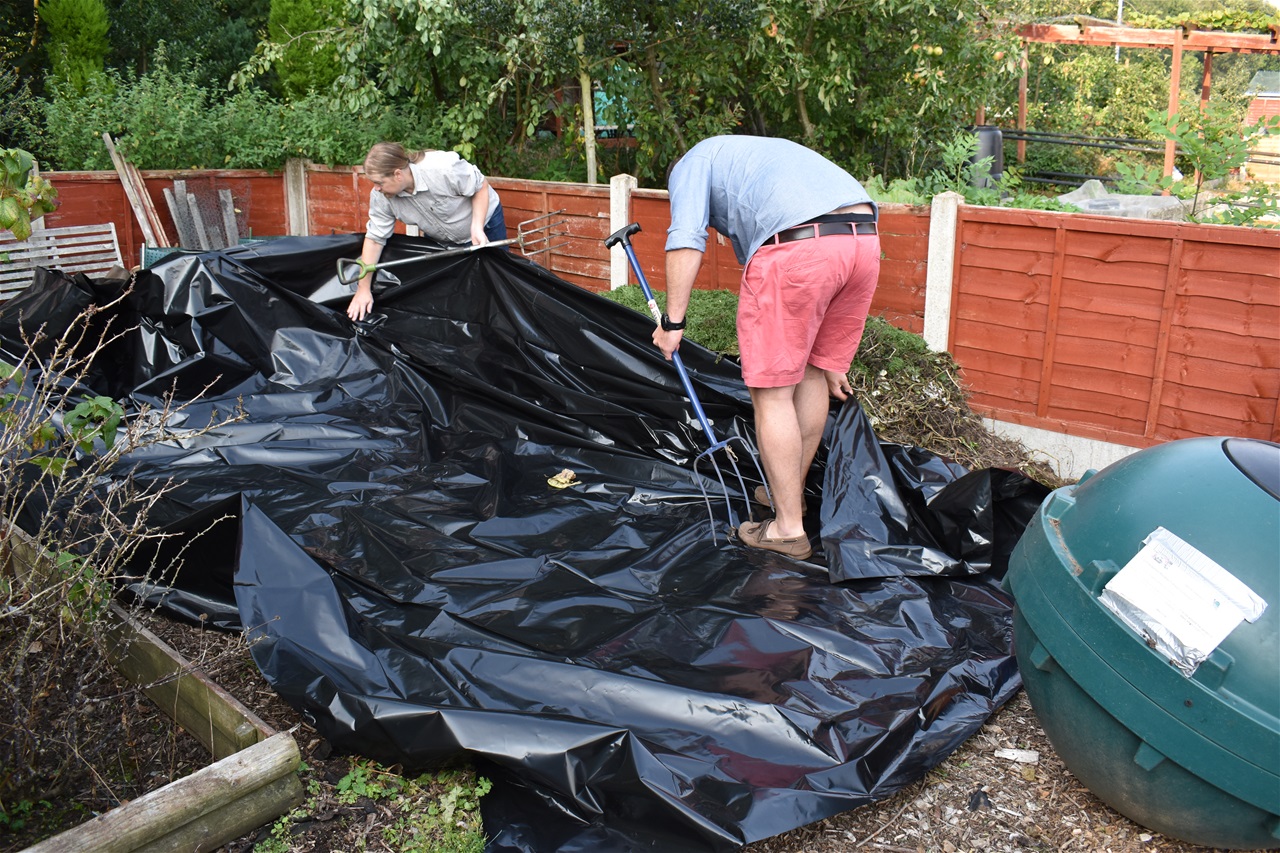
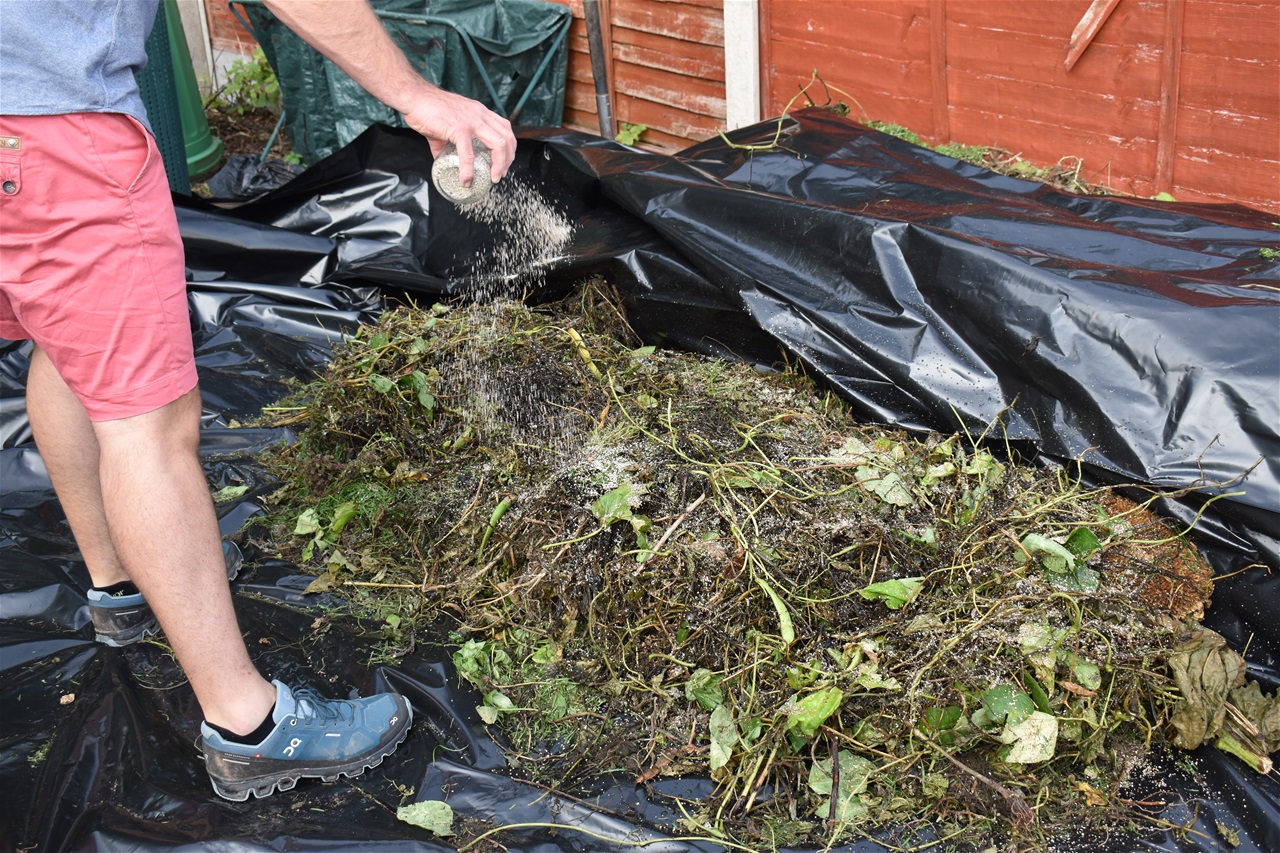
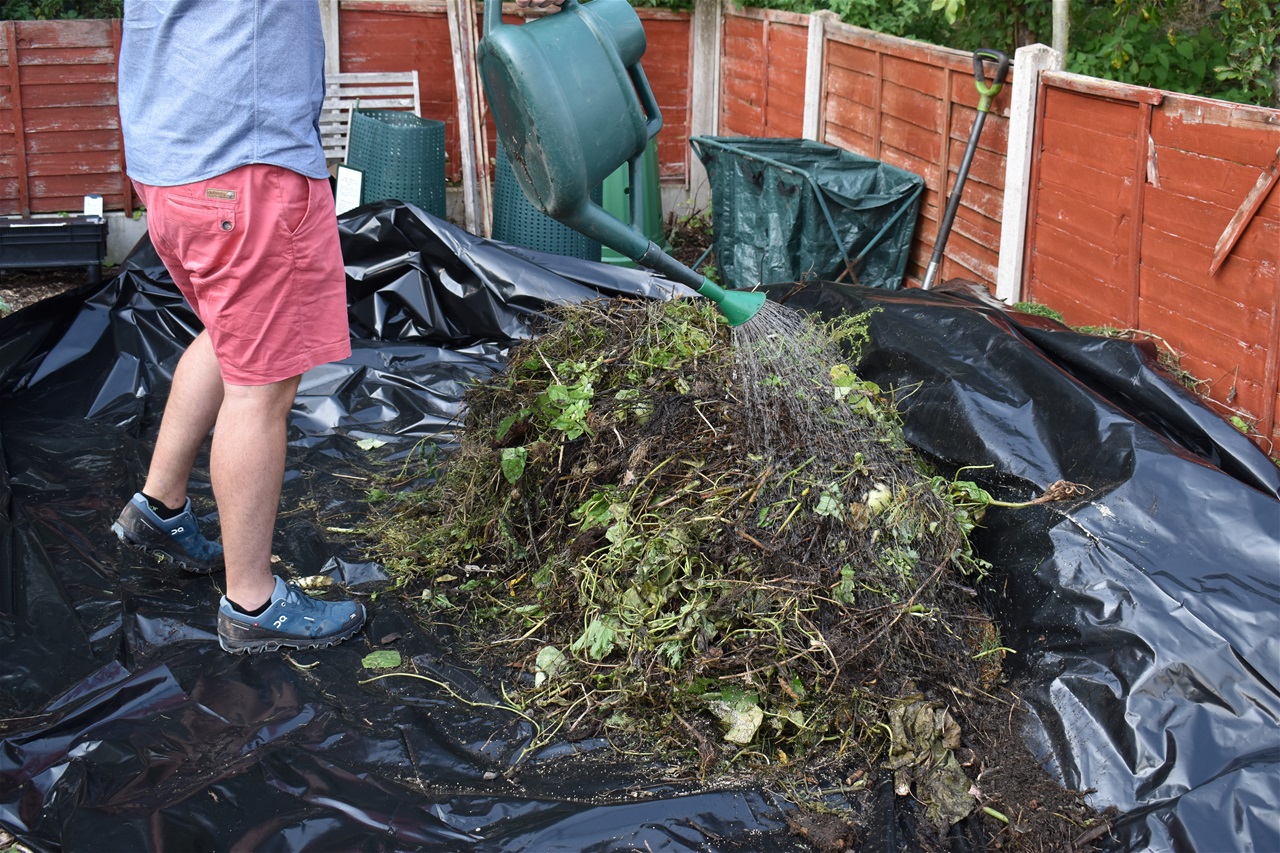
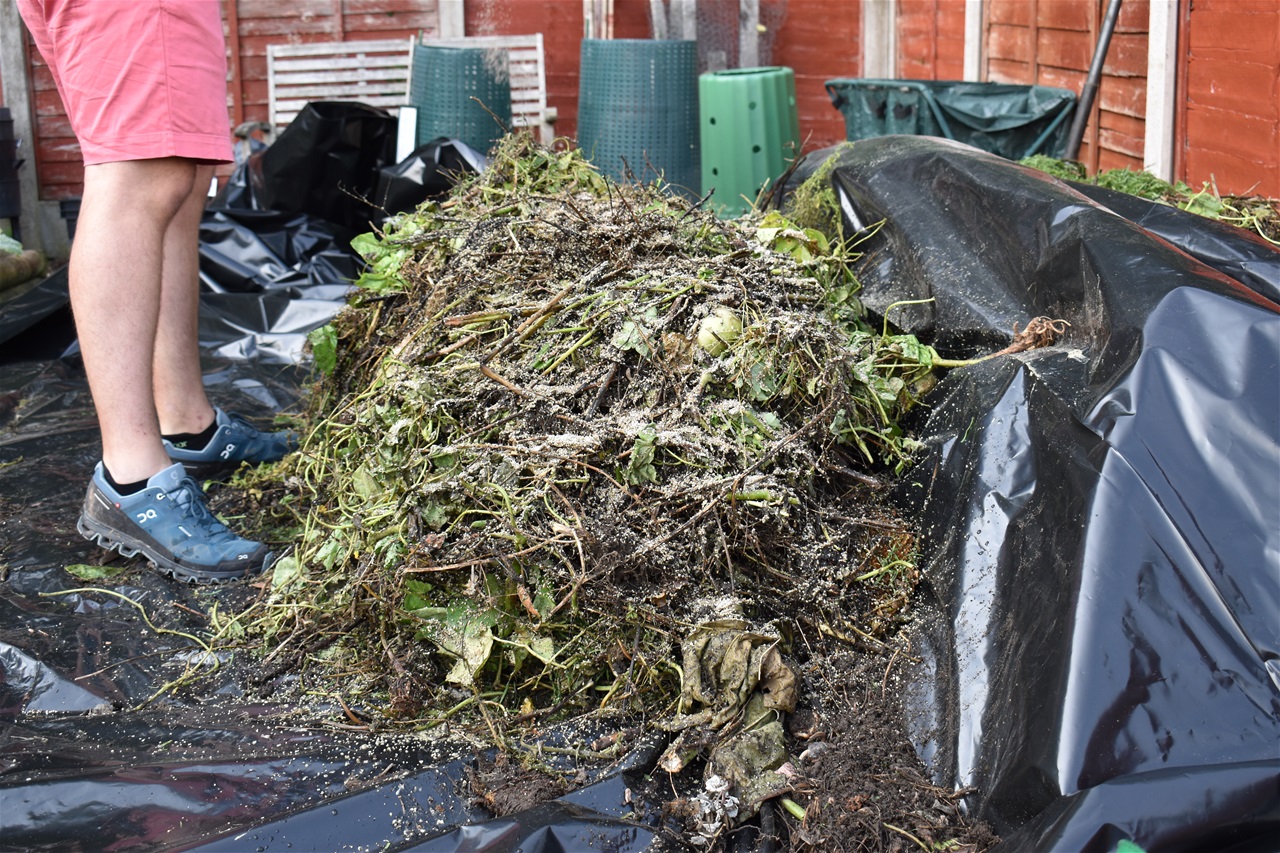
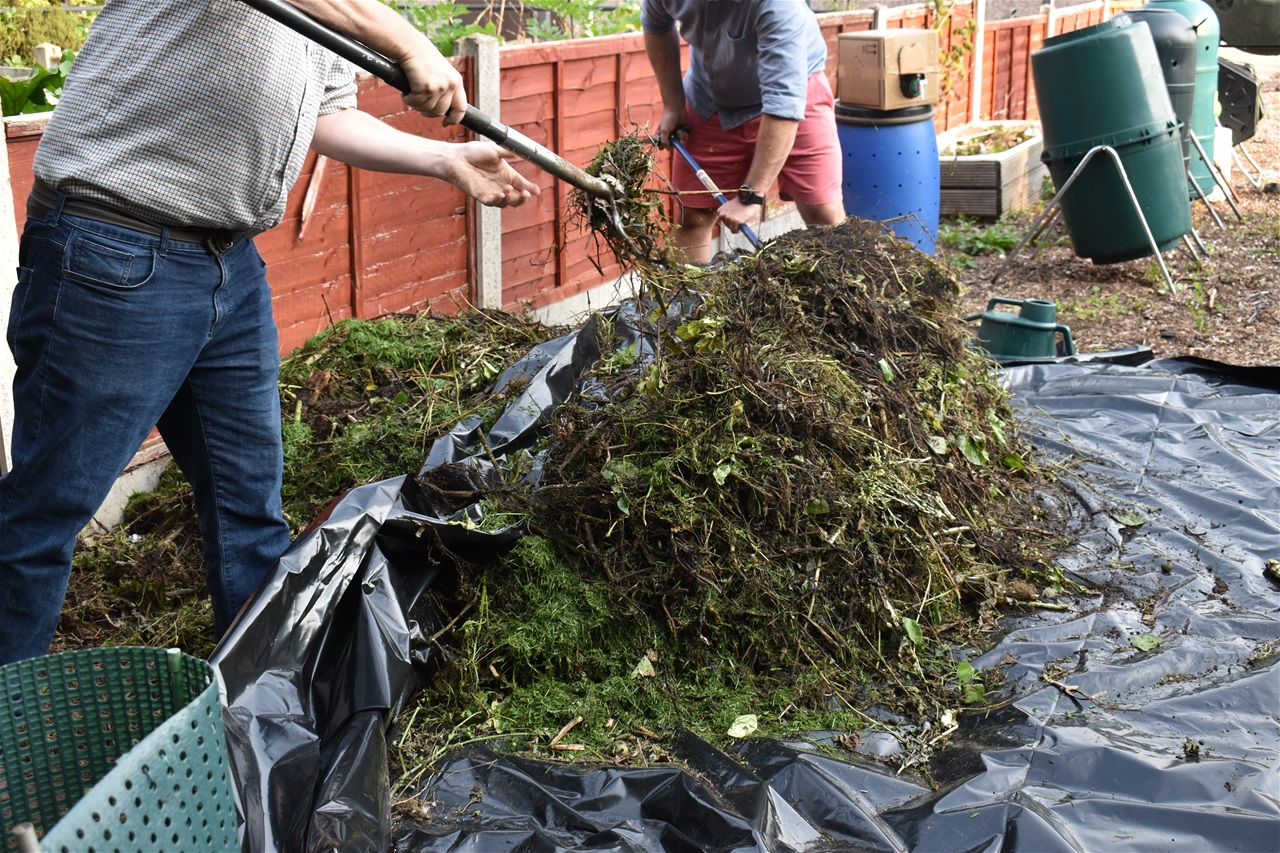
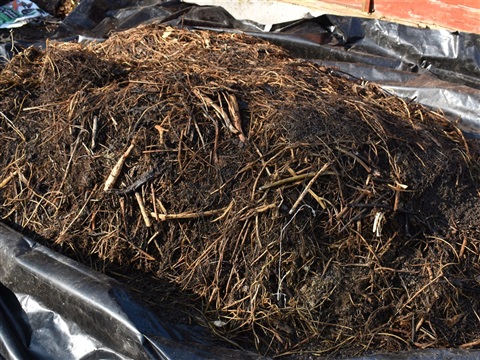
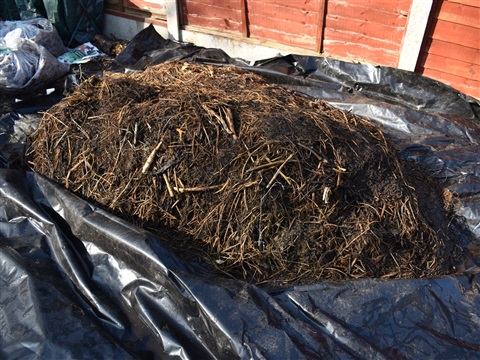
Debbie Hendriksen
Thanks for a very detailed explanation of Bokashi. I have just bought 2 bins from my council sponsored site, along with further daleks for garden composting. I look forward to seeing the results.